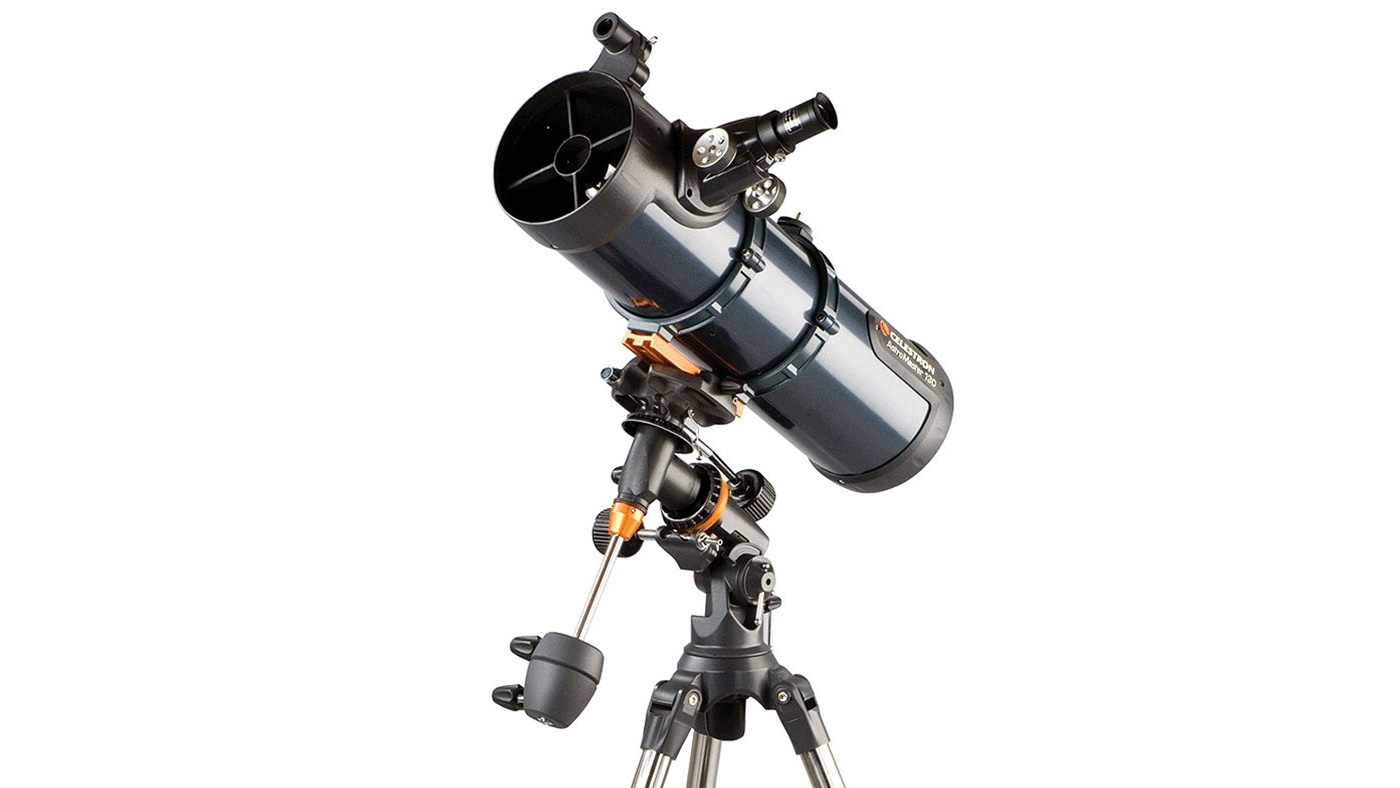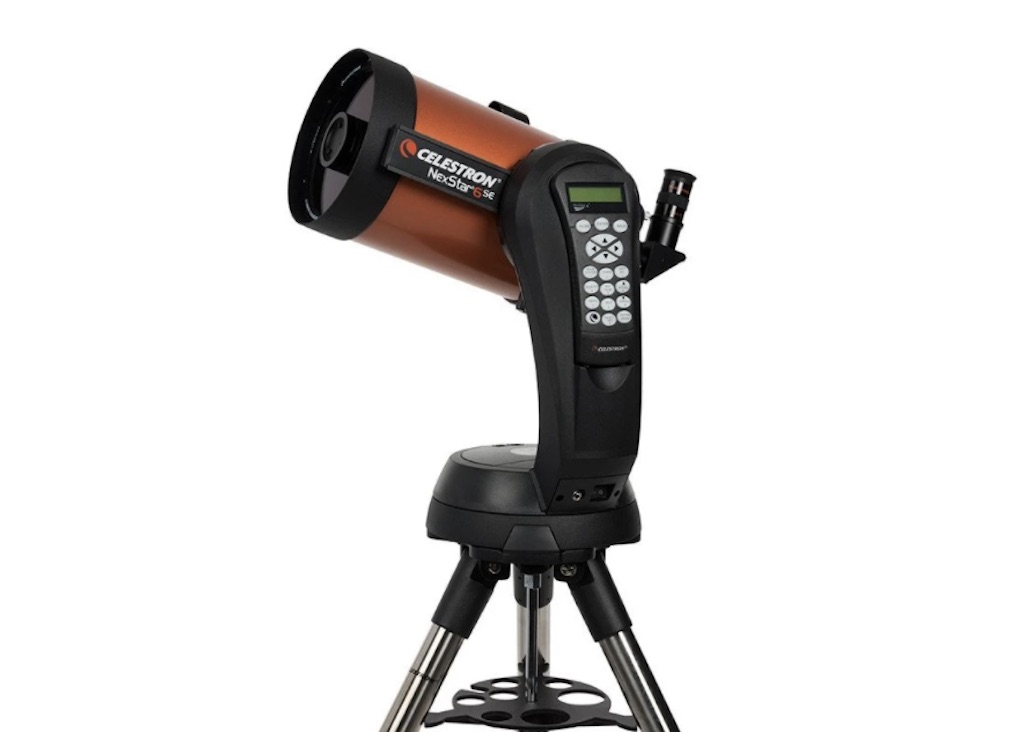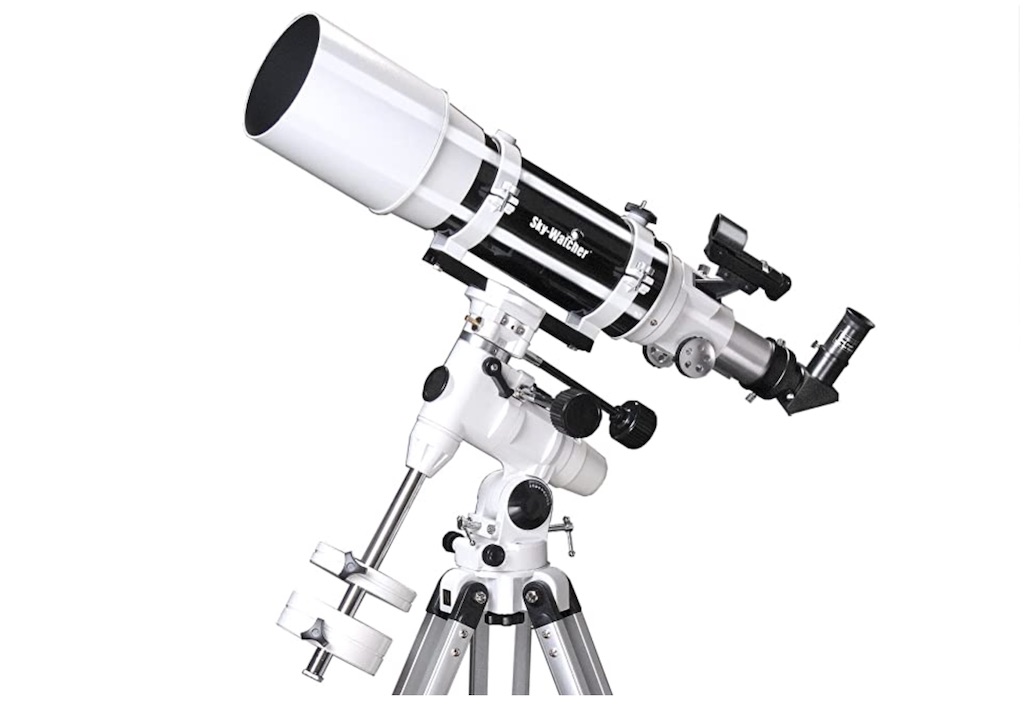The best telescopes for astrophotography and stargazing
Study or shoot the cosmos close up, with the best telescopes for astrophotography and stargazing
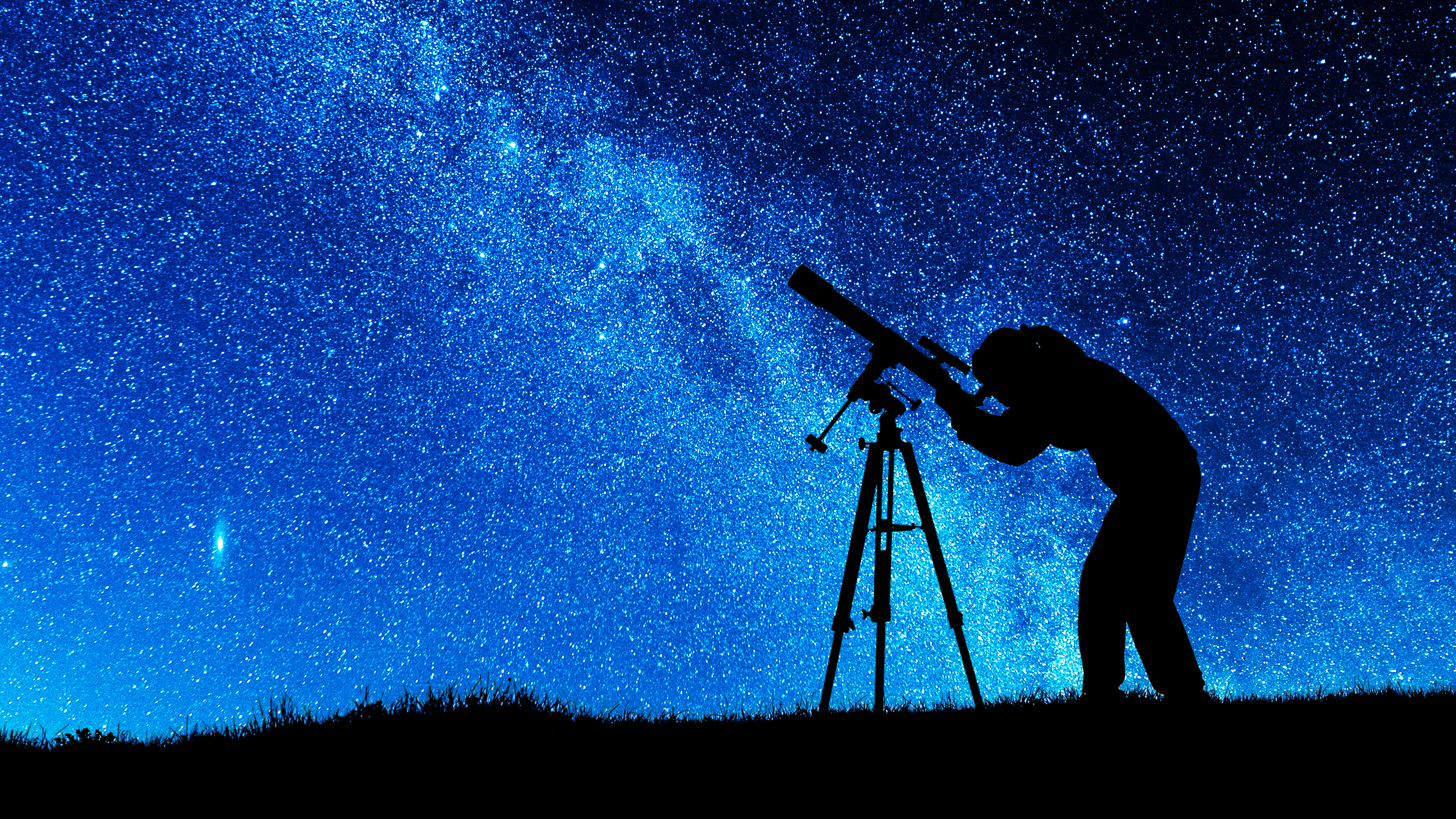
The best telescopes for astrophotography are ideal for both stargazing enthusiasts and those who want to capture the cosmos with their cameras. So which model should you buy? Well, that depends a lot on your level of experience.
If you're looking for the best telescope for beginners, we recommend setting your sights on an inclusive package that lets you try a bit of everything, from general observing to afocal astrophotography. These instruments often come with a tripod, mount, eyepieces, finderscope, and even a smartphone adapter.
If your needs are slightly more advanced, you should consider whether you're a deep-sky or Solar System imager. The aperture (or objective lens) of the telescope will be your guide on whether it's capable of capturing 'faint fuzzies' or just enough to make the planets and lunar surface pop. For more details, skip to our section on How to choose.
An increasingly popular option is a smart telescope – that has a built-in camera, and beams its images to your phone or tablet, so everything is remotely-controlled – and you can even observe the night sky from indoors
Luckily, there are so many great options for the best telescope for astrophotography that users are spoilt for choice. You'll find very best telescopes for astrophotography below.

Gemma works for the European Space Agency and was the editor of All About Space magazine. She is the author of several books including "Quantum Physics in Minutes", and "Haynes Owners’ Workshop Manual to the Large Hadron Collider".
The quick list
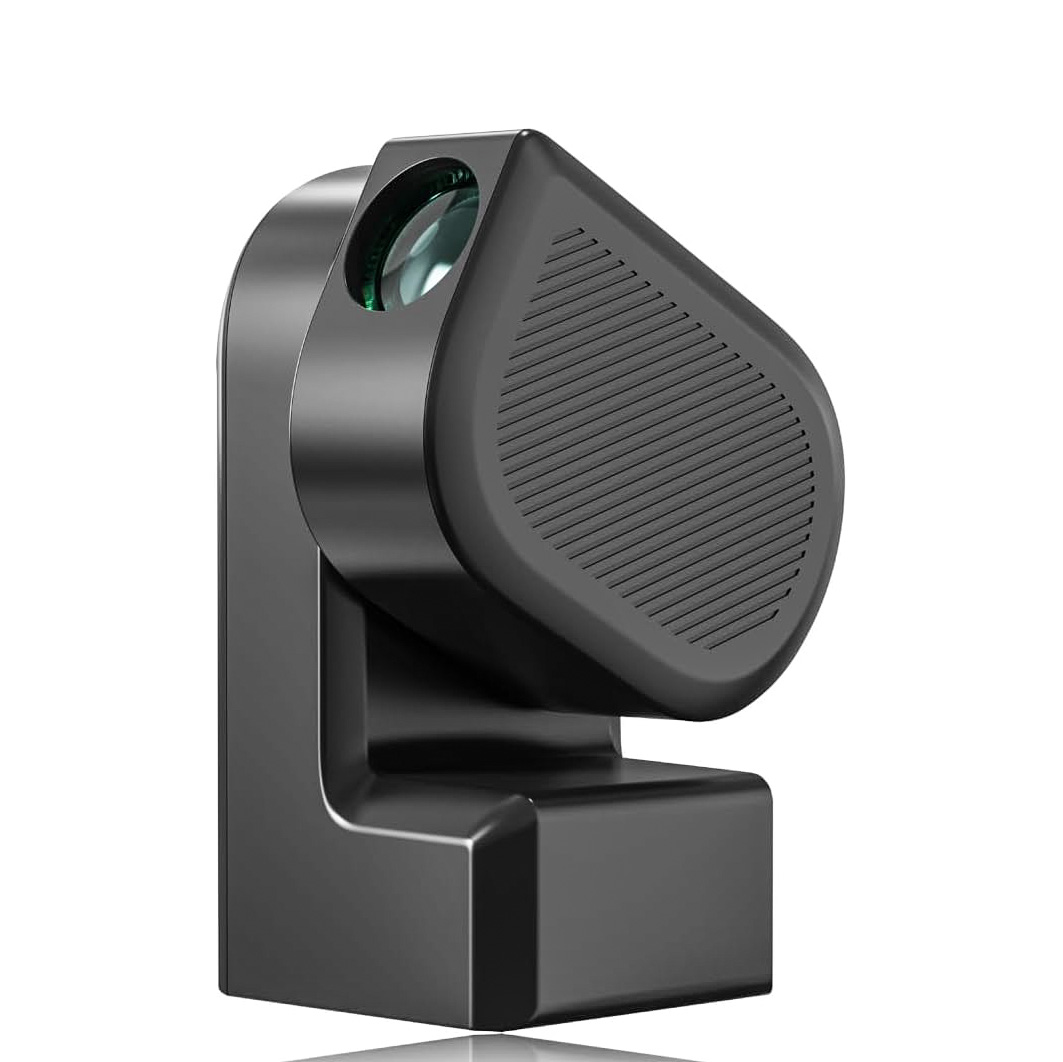
This is our top pick – it's a smart telescope so you can view and record your observations on your phone or tablet. And it is great value for what it offers
Read more below
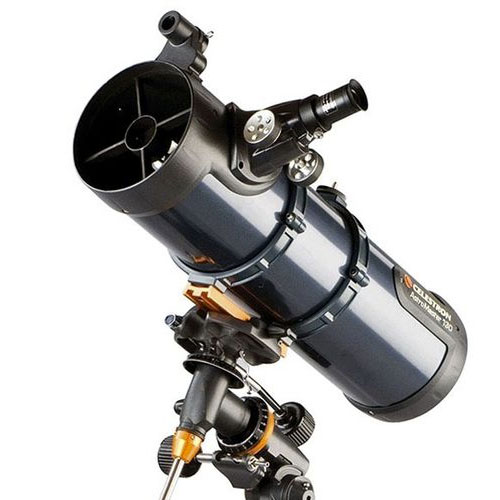
A telescope and mount combo made with the novice astronomer in mind. Snapshots of the Moon and planets through the optical system is pleasing for a budget instrument.
Read more below
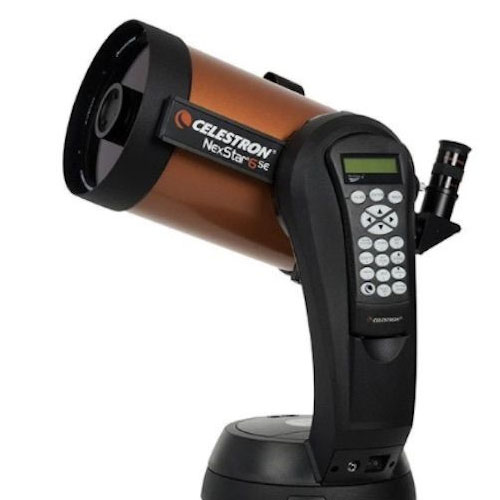
The Celestron NexStar 5SE is a highly reliable, affordable and travel-friendly telescope that oozes accessibility and versatility from its classic orange Celestron optical tube.
Read more below
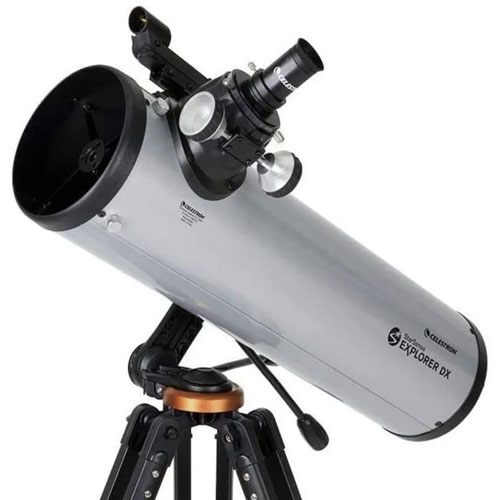
The Celestron StarSense Explorer DX 130AZ telescope is all about the smartphone app used to align it, though it’s a more manual affair than you might expect.
Read more below
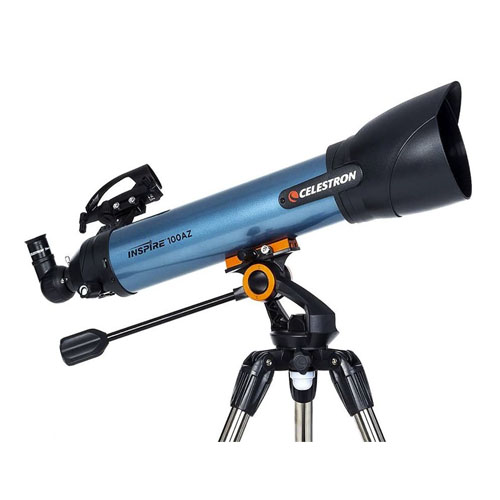
This is our recommended telescope for the ultimate beginner, or for those on a tight budget. It ships with two eyepieces, star diagonal, tripod and more.
Read more below

Maksutov-Cassegrain design offers excellent, high-clarity views of the cratered surface of the Moon, very good contrast of Jupiter's atmospheric bands and belts and more.
Read more below
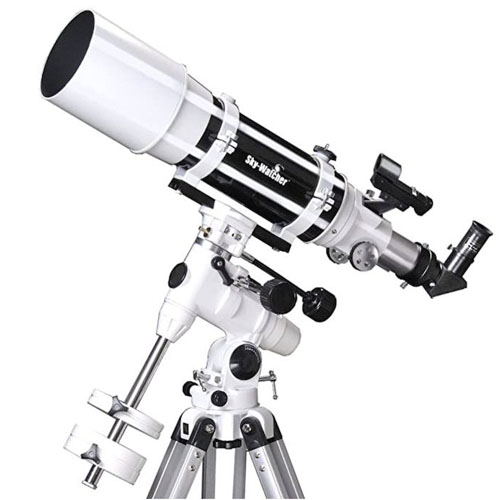
The Sky-Watcher Startravel 120 is a great telescope, given the price. Not only do you get a decent-sized 120mm aperture, but it also comes with a highly-respected EQ3-2 equatorial mount to make tracking a breeze.
Read more below
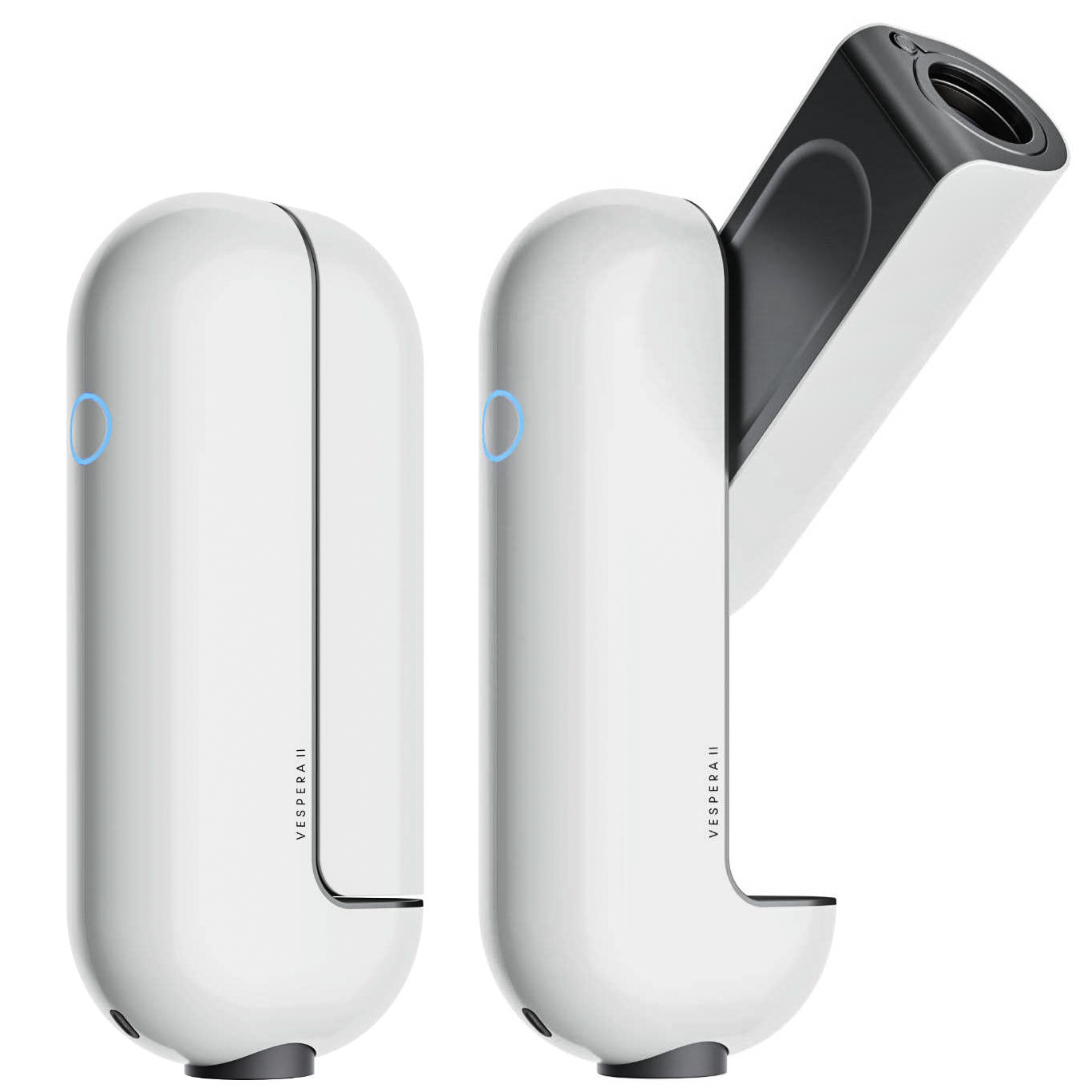
This Vaonis smart telescope uses an 8-megapixel Sony sensor, giving you a hassle-free way of observing deep space from your phone or tablet.
Read more below
The best telescopes for astrophotography
Why you can trust Digital Camera World
Best overall
Specifications
Reasons to buy
Reasons to avoid
✅ You're new to astronomy: This smart telescope can automatically detect and slew to night sky objects.
✅ Fast setup is important: From turning it on to taking your first astrophotograph takes just a few minutes.
❌ Traditional telescopes are important: If you get excited about looking through a viewfinder to gaze at the stars then viewing through a smartphone won't cut it.
❌ You want high-resolution images: this is a budget smart telescope so you it only has a 2MP sensor
🔎 Zwo https://www.digitalcameraworld.com/reviews/zwo-seestar-s50-review Smart telescopes have taken lots of the expense and strain out of beginner astrophotographers - but this model is the best budget option in this exciting new type of telescope. ★★★★
When the ZWO Seestar S50 dropped two years ago, it felt like a seismic shift in amateur astronomy. For me, it wasn't just another gadget; it completely demolished the cost barrier to entry for the "smart telescope" category.
Two years on, I still consider it the absolute champion for democratizing the night sky. The sheer value packed into this little device is astounding. And let’s be clear, this isn't some fly-by-night operation—its manufacturer, ZWO, is one of the most trusted and respected names in specialist astrophotography cameras. That pedigree alone should tell you this is something to be taken seriously.
The Seestar S50’s arrival in 2023 slashed the entry cost to get a smart telescope by a huge margin. A couple of years later, it’s still the standout, bringing effortless astronomy to a greater number of people in a great value package. It needs to be taken seriously, too; its manufacturer, ZWO, is one of the most respected names in the specialist world of professional telescope cameras.
There is no eyepiece, so you view the images on your phone or tablet. As a budget model, resolution is restricted to 2MP, and you can only shoot vertical images – but then there is no need to buy a separate camera or lens..
In my tests, I was impressed with the results you got for the price. A major advantage is that the software allows it to give you decent results even in places with noticeable light pollution — and we also found it worked well in daylight for solar observations.
Read our full ZWO Seestar S50 review.
Best reflector
Specifications
Reasons to buy
Reasons to avoid
✅ Automatic slewing is important: Tired of manually pushing the telescope back and forth? This telescope has a motorized mount that can automatically slew to night sky objects.
✅ You want to take long exposures: Because of the motorized mount long exposure photography is possible thanks to tracking of objects to prevent motion blur.
❌ Complex setup: Need something ideal for a newcomer to astronomer? The equatorial mount on this telescope is slightly more complicated than an Alt-az.
❌ Collimation causes problems: The technical aspect of collimating a reflector telescope might be too much of a task for some who don't want that upkeep.
🔎 Celestron AstroMaster 130EQ Powerful and accurate this motorized reflector is ideal for astrophotographers who are hoping for long exposure shots, but its equatorial mount and requirement for collimating will need some learning. ★★★★
If you're after the best telescope for astrophotography and serious stargazing, we recommend the Celestron AstroMaster 130EQ, which offers a great package for the slightly more experienced amateur astronomer – especially given that it comes with a CG-3 equatorial mount, which requires more practice and patience to use over the basic alt-azimuth.
The equatorial mount assists with tracking, which is essential for longer exposure astrophotography. Meanwhile, its decent aperture will show a good amount of detail on the solar system and deep-sky targets. However, in order to get the very best from the optical system – which is a Newtonian reflector – you'll need to collimate the setup.
This process can be tricky for beginners, but with practice, it's easily achieved – especially given Celestron has supplied a manual that walks you through the process. The optical performance is very good, with no major visual defects visible and we enjoyed the stunning contrast and clarity in the field of view.
The Celestron AstroMaster 130EQ comes fairly well equipped, and features two good quality eyepieces (20mm and 10mm), a StarPointer red dot finderscope, and a free download of Starry Night Basic Software, allowing you to choose your targets and plan your observing session before heading outside. Be warned though: you won't see all 36,000 objects in the software database using the 130mm aperture.
Overall, the package is a sound choice as the first serious telescope for astrophotography. And, if you're a complete beginner, practice, and patience will help you to yield some impressive images – more so, provided you accessorize the Celestron AstroMaster 130EQ with eyepieces that are respectful of the optical tube's useful magnifications. For example, it doesn't come with a Barlow lens, which will improve viewing and imaging further.
Read our Celestron AstroMaster 130EQ telescope review for more details
Best catadioptric
Specifications
Reasons to buy
Reasons to avoid
✅ Easy setup is a priority: Thanks to the clever design of the telescope and its tripod you'll have the scope set up in minutes.
✅ You need a motorized mount: Manual slewing can be fun but navigating to celestial objects automatically with the hand controller is faster and more accurate.
❌ You're a beginner: There are other telescopes more suited to beginners that are far smaller and lighter.
❌ Budget is tight: While not the most expensive telescope ever, it's certainly not entry-level.
🔎 The Celestron NexStar 5SE is an all-rounder that's hard to beat as an introduction to observing and imaging. The long focal length and high focal ratio tailor it to lunar and planetary imaging in particular, and it will facilitate great images of the our neighbors in the Solar System as well as some of the brighter deep-sky objects such as the Orion Nebula or the Andromeda Galaxy. ★★★★½
Very popular among amateur astronomers worldwide, the Celestron NexStar 5SE is an extremely user-friendly option for those who are not just starting out in observing, but who are also keen to try their hand at astrophotography.
It features a computerized mount, which enables the astronomer to spend more time imaging and observing instead of spending huge amounts of time tracking down targets in the night sky: at the simple touch of a button on the included hand control, you can lock onto your chosen object and get stargazing right away. What's more, the SkyAlign technology is a breeze to use and, in our experience, aligned the instrument within minutes.
The telescope's design is exquisite given the cost and we're impressed with the optical performance. Given its focal ratio of f/10, the NexStar 5SE is a fast telescope, so it's best suited to lunar and planetary astrophotography. We found views and resulting images clear and crisp, especially craters along the Moon's terminator where night meets day.
Beginners and seasoned astrophotographers will also enjoy picking out detail on the surface of Mars, Jupiter, and Saturn; we highly recommend accessorizing this telescope with a range of filters for optimum results.
The Celestron NexStar 5SE is quite portable, and since it's comprised of three different components – the optical tube, mount, and steel tripod – assembly takes no more than about 10 minutes.
Read our Celestron NexStar 5SE telescope review for more details
Best all-rounder

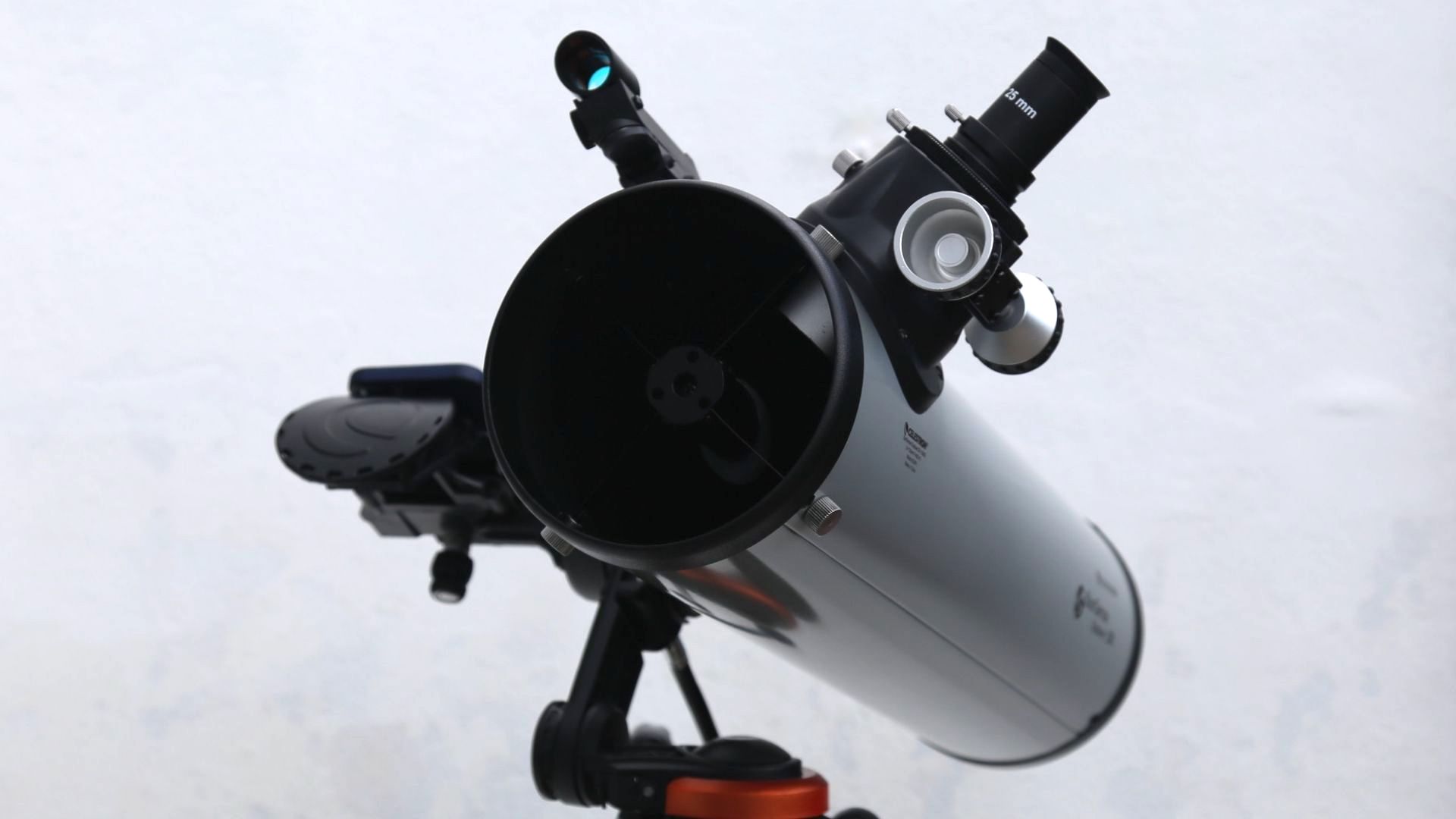
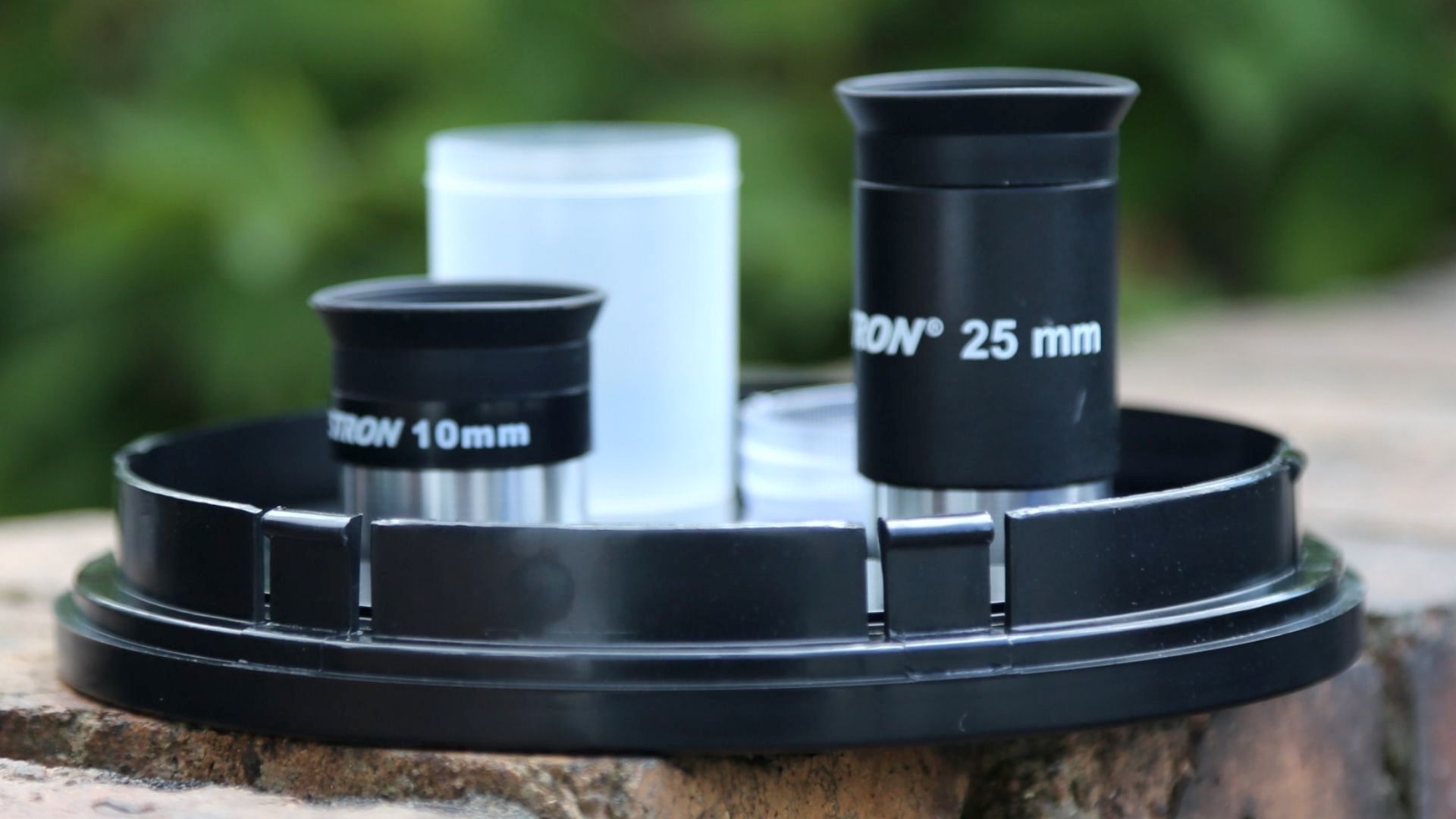
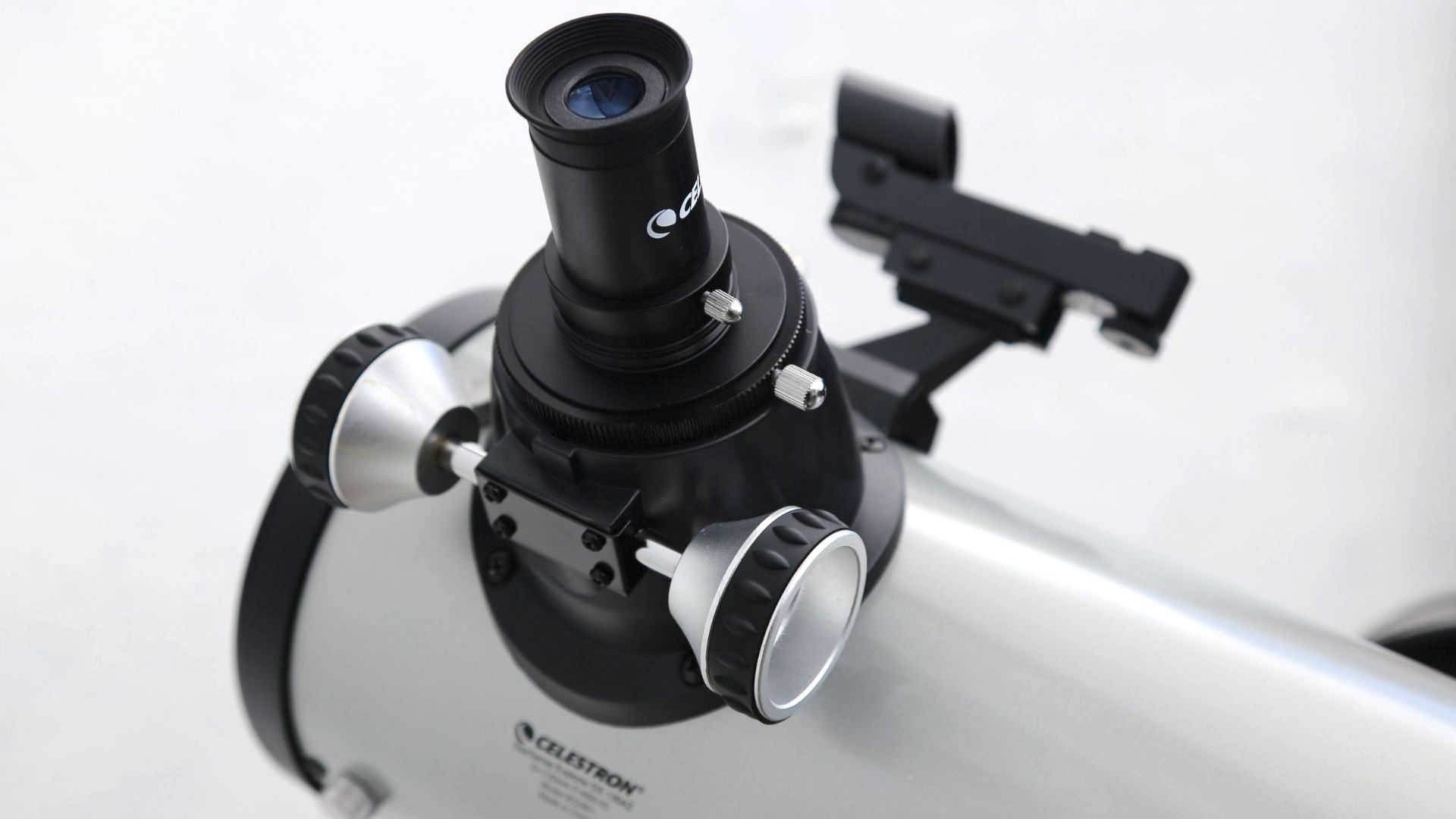
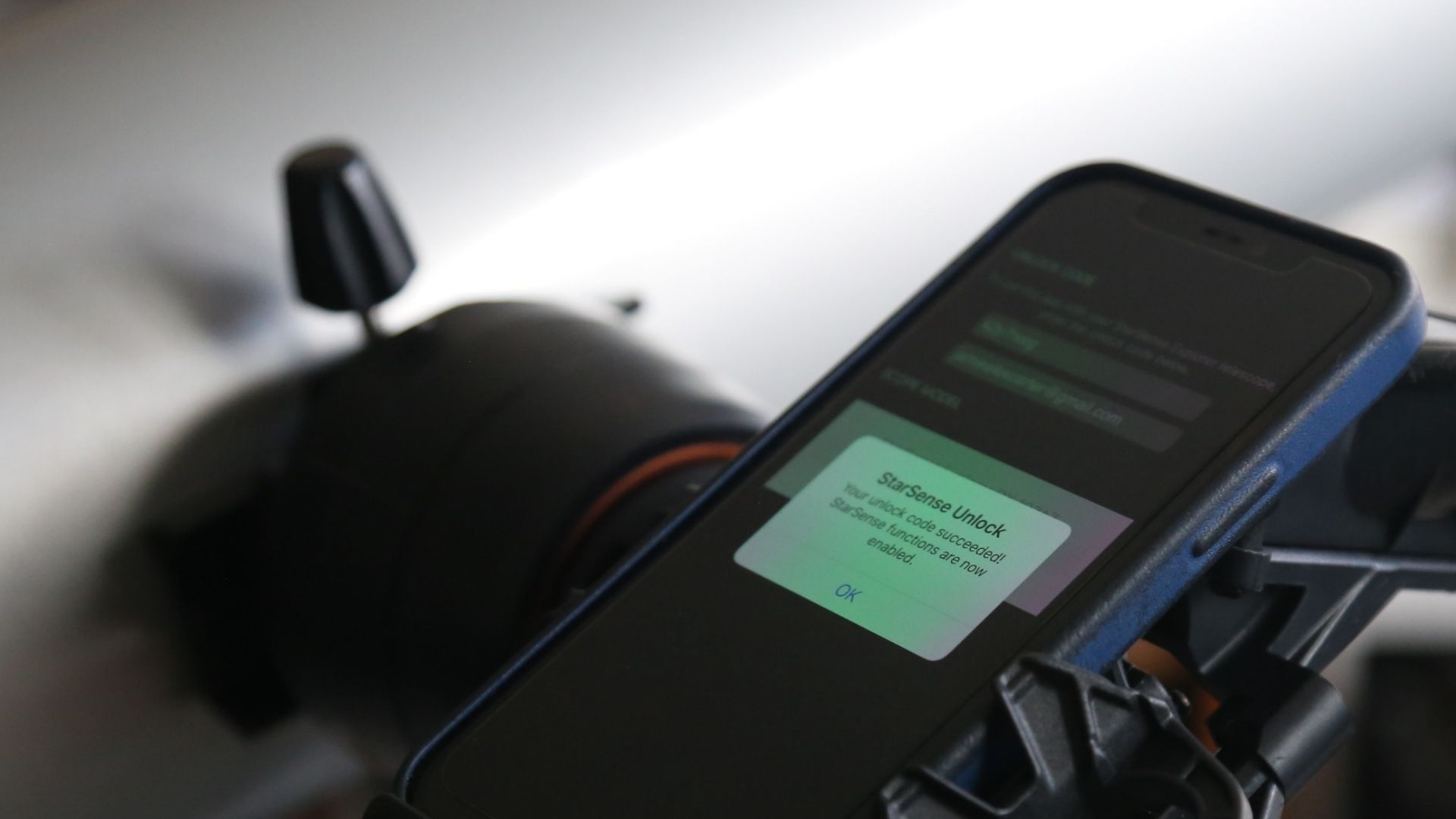
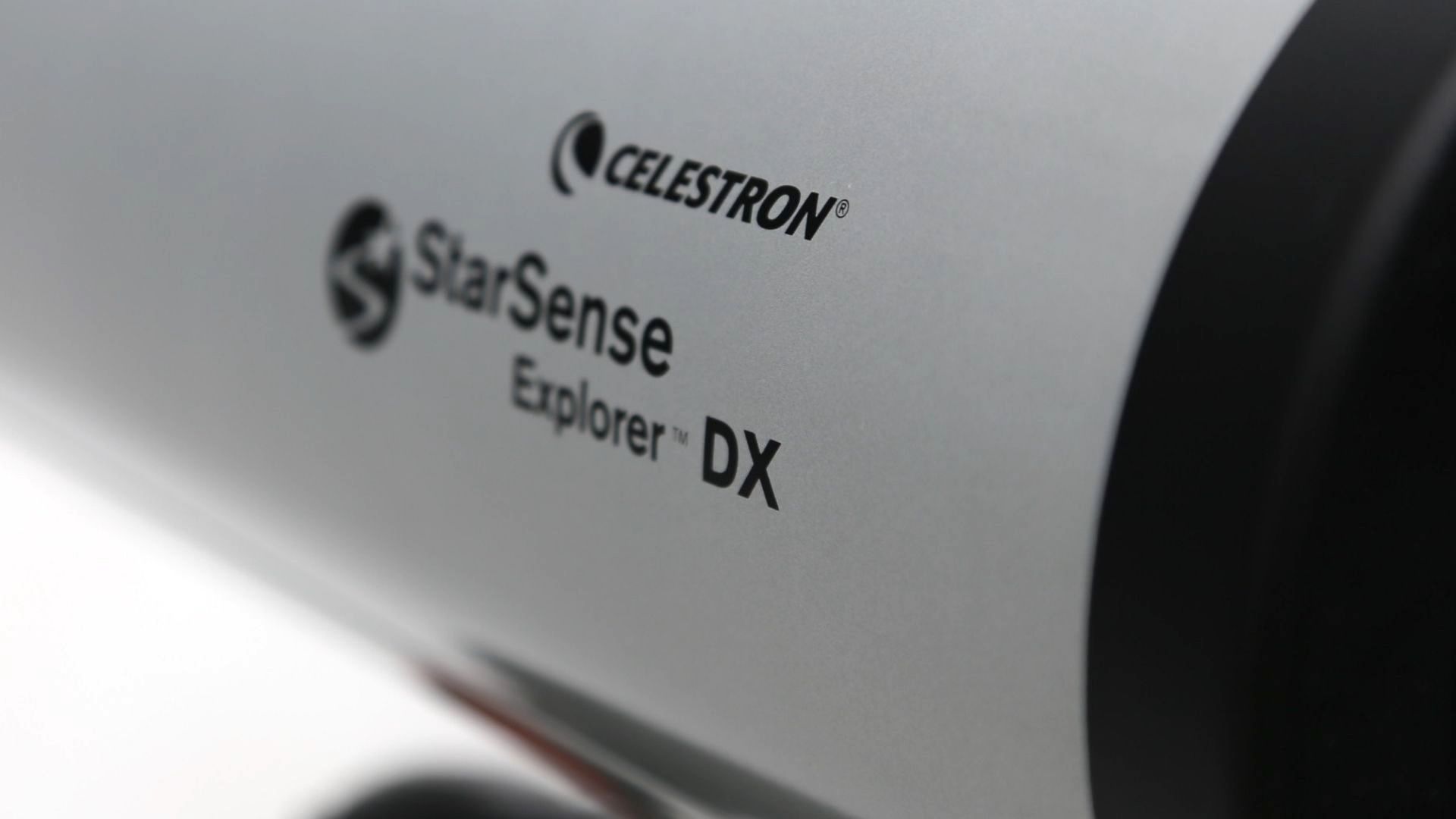
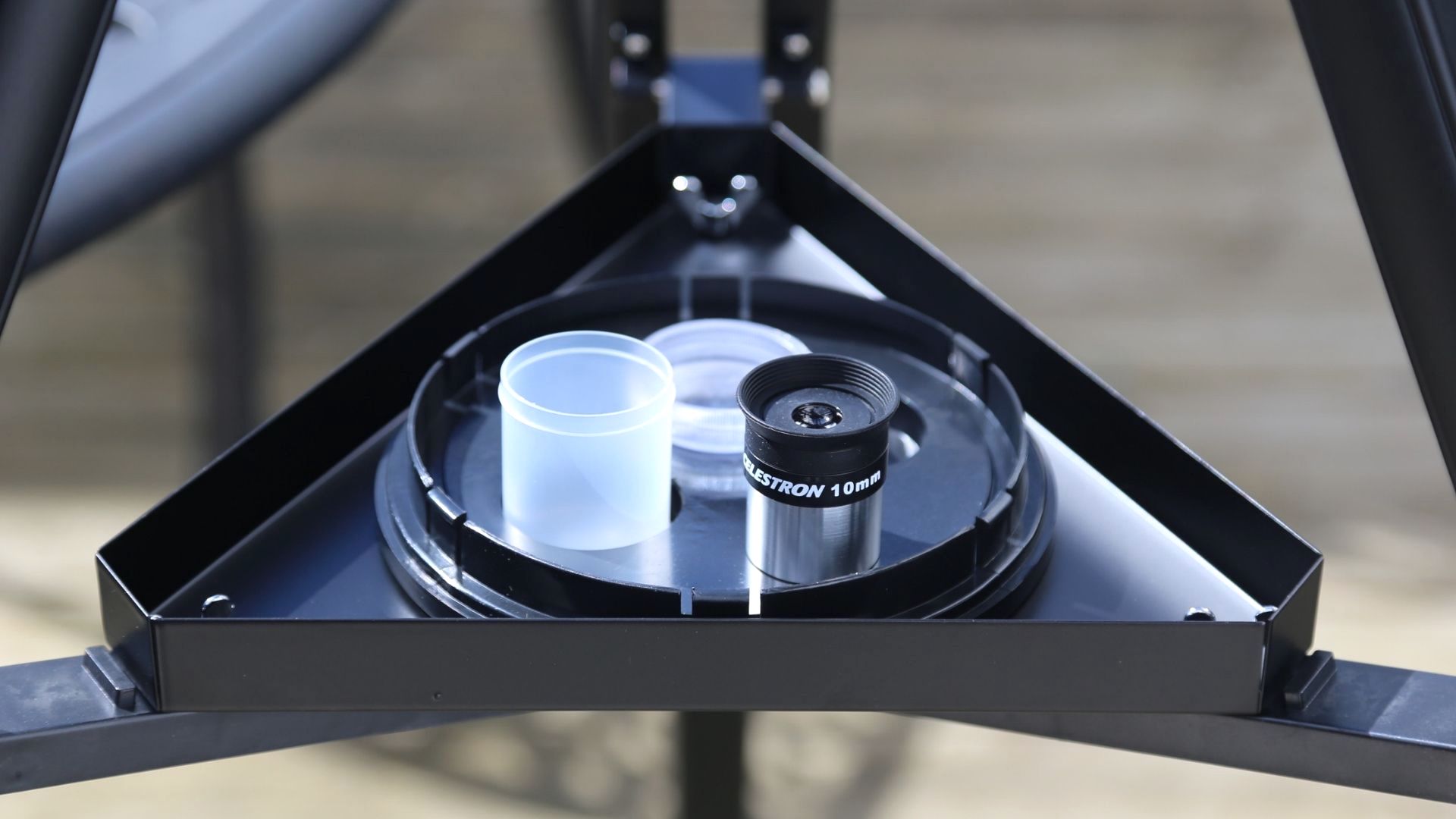
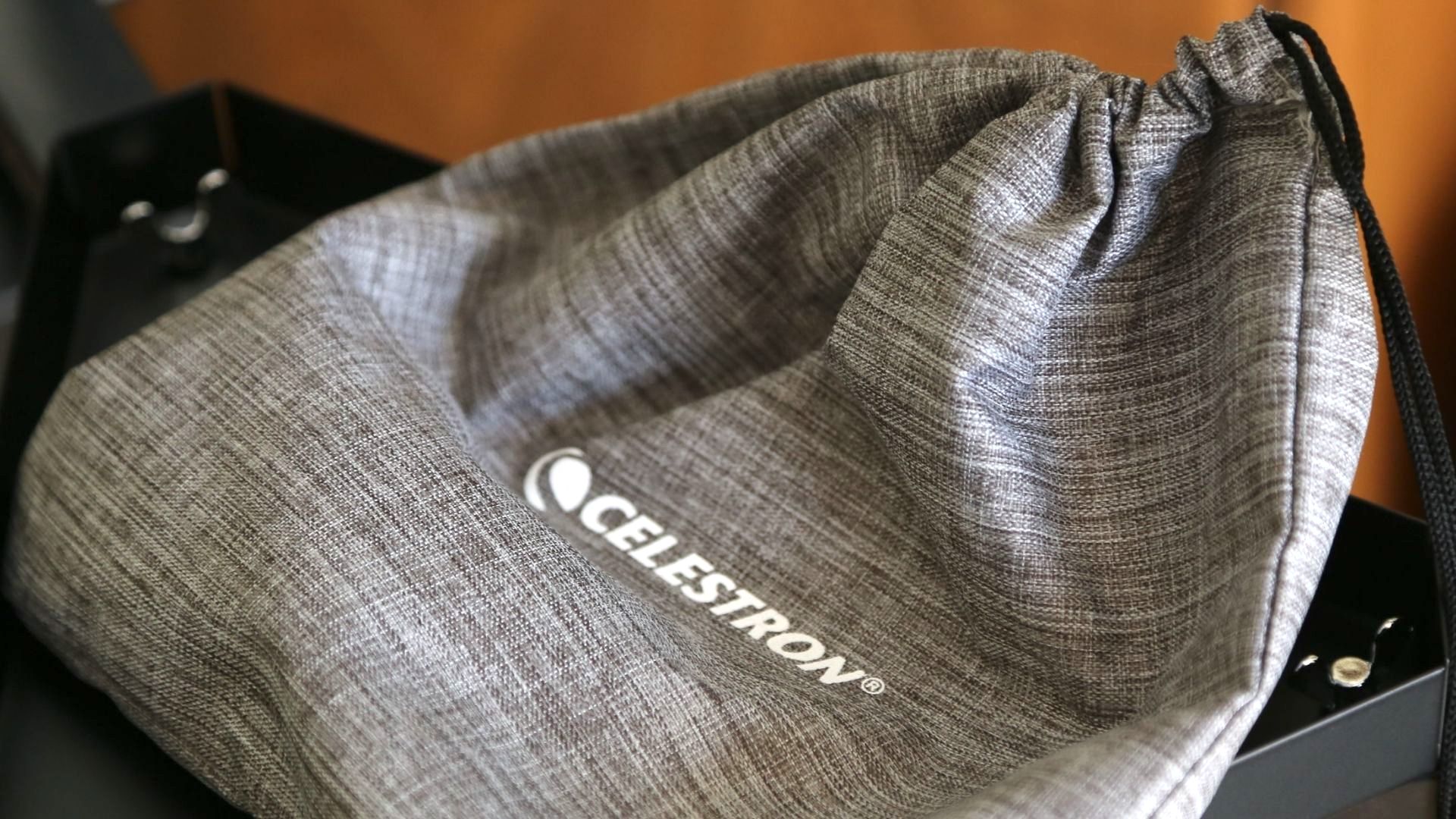
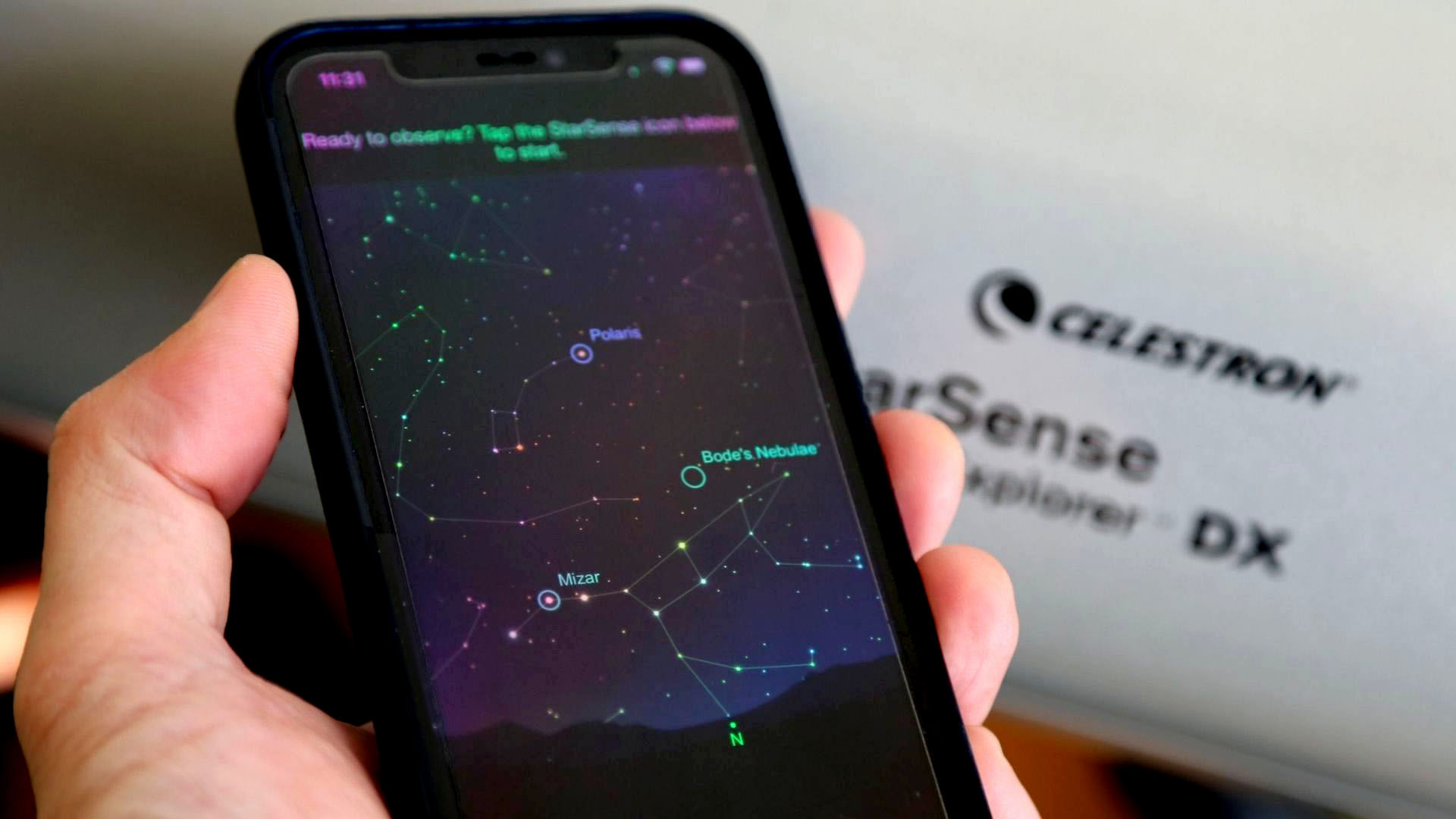
Specifications
Reasons to buy
Reasons to avoid
✅ You're on a budget: The StarSense Exporer DX 130AZ is very accessible if you're working to a tight budget and this beginner telescope is often on sale during the holiday sales.
✅ Comes with everything: This telescope ships with everything you need to get started including a finderscope, a 25mm and 10mm eyepiece, plus a tripod.
❌ Astrophotography is key: Grabbing a quick smartphone snap is do-able, but anything more sophisticated isn't great due to the lack of a motorized mount.
❌ Smartphone battery life: During testing we found that the battery life wasn't fantastic on our smartphone when left strapped to the telescope outside on a cold night.
🔎 Celestron StarSense Explorer DX 130AZ The StarSense Explorer DX 130AZ is a fine telescope for beginners wanting astronomical views. We can see the thinking behind it, and the way it uses its StarSense app to align with the night sky is very clever. It's all about the smartphone app used to align it, though it’s a more manual affair than you might expect. ★★★★
The largest of Celestron's StarSense Explorer range, the Celestron StarSense Explorer DX 130AZ offers a very good aperture size and a selection of accessories, including two eyepieces (10mm and 20mm), star diagonal, StarPointer red-dot finder, alt-azimuth mount, tripod, smartphone dock, and accessory tray. Set up is a simple process that takes no more than about 15 to 20 minutes. And it all comes in at a very reasonable cost
The StarSense Explorer DX 130AZ is a fast telescope due to its focal ratio of f/5 and focal length of 650mm. That makes it better suited to low-power views of the night sky. We enjoyed a selection of planetary and deep-sky targets in the field of view.
Before we began observing, we downloaded the StarSense App, which is supplied for free with the telescope. We encountered no problems installing it onto our iPhone 11 and found the interface to be extremely simple to navigate and use.
The StarSense App is packed with planets, stars, nebulae, and galaxies to explore – so if you don't know what to observe on your first night, there are plenty of recommendations. The app also makes short work of aligning the telescope, working accurately, and offering plenty of guidance to ensure that the skywatcher is imaging and observing within minutes.
Our first target was Mars, which shone brightly in the south east. Slewing to the Red Planet as instructed by the app, we noted the screen "zoom in", which prompted us to use the slow-motion controls (which work smoothly enough) to bring our target into focus. The fourth planet from the Sun is an impressive sight through the StarSense Explorer DX 130AZ, especially when we added a 2x Barlow lens. At a magnification of 150x, Mars appears as a sharp disk with the south polar cap visible.
Testing the StarSense Explorer DX 130AZ's mettle on fainter deep-sky targets, we slewed to the Andromeda Galaxy (Messier 31) and the Triangulum Galaxy (Messier 33). We weren't disappointed with the views; they were clear, and contrasty and demonstrated the reflector's ability to collect enough light for bright observations.
It's not possible to take long-exposure astrophotography due to the undriven amount but were able to take a decent focal shot using a smartphone and the supplied dock – results are pleasing and sure to delight beginners.
Read our Celestron StarSense Explorer DX 130AZ review for more details
Best for beginners



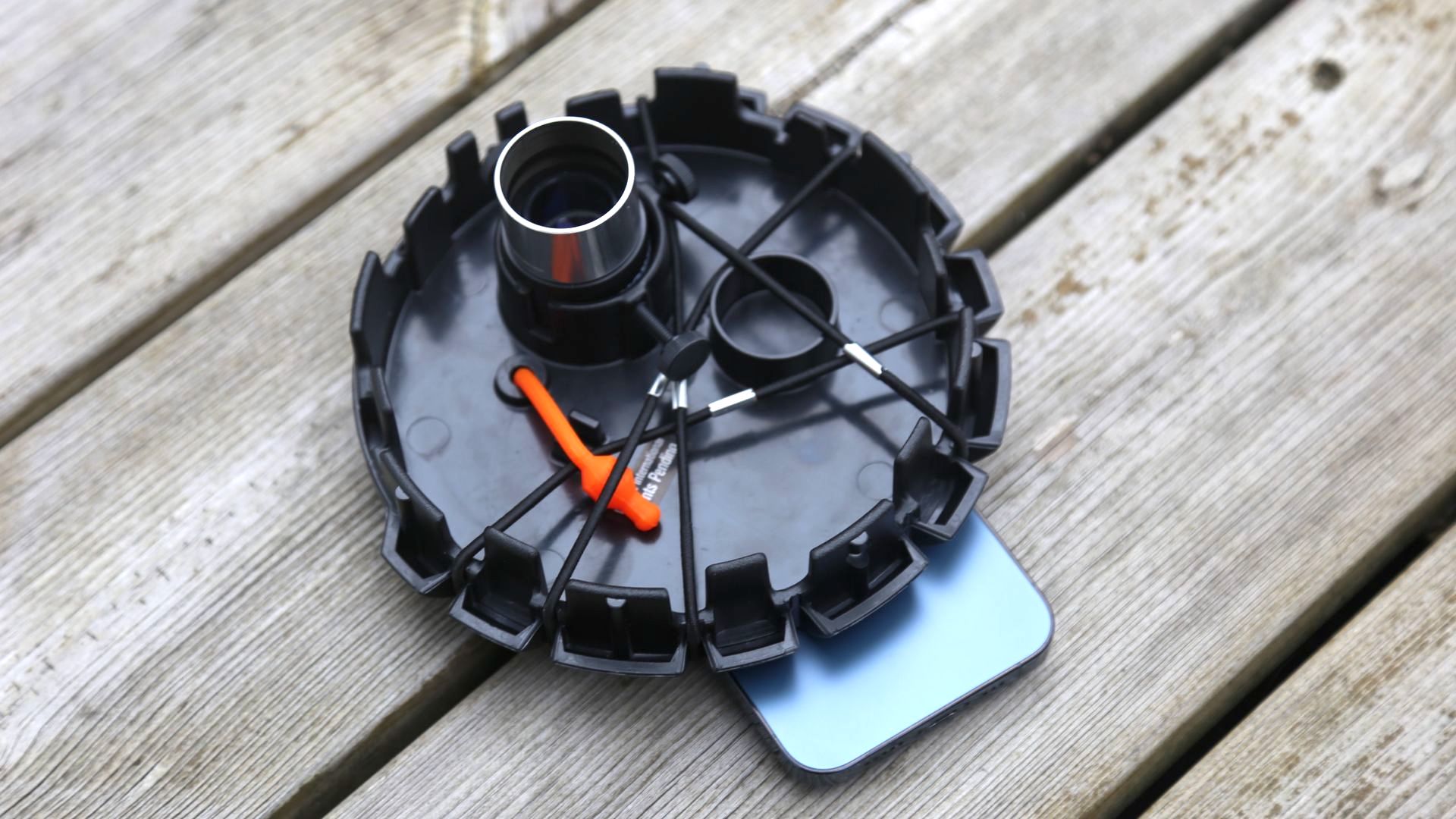
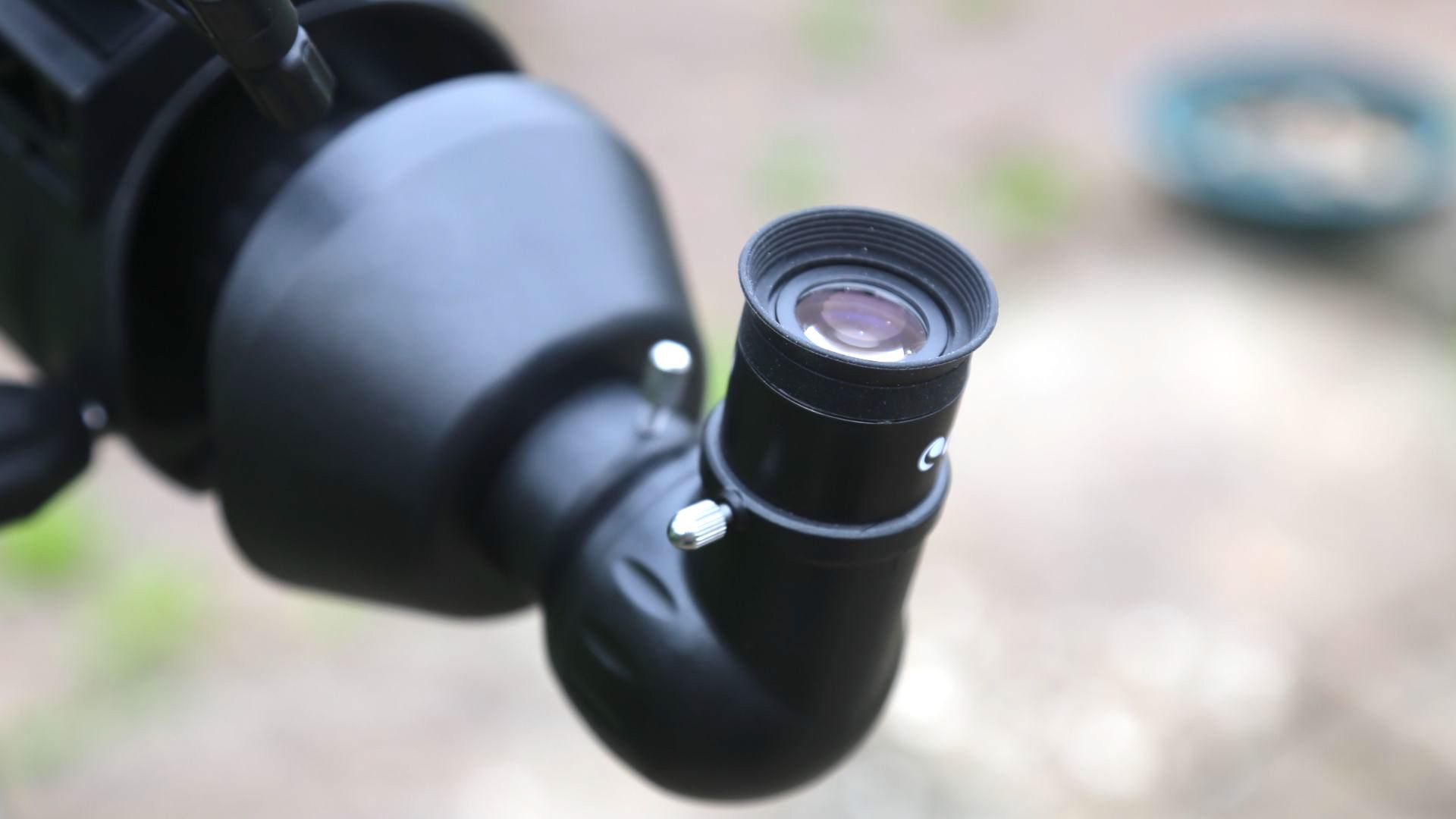
Specifications
Reasons to buy
Reasons to avoid
✅ Easy to use: The simple user interface of this beginner refractor telescope makes it ideal for beginners.
✅ Fully equipped: Two eyepieces, 90-degree diagonal, a finderscope and full-height tripod with Alt-az mount also ships with the Inspire 100AZ and means full compatibility and instant setup guaranteed.
❌ For astrophotography: Only basic astrophotography is possible with this telescope, limited to short exposures of targets.
❌ Night-time use only: Solar filters cannot be attached to this telescope so viewing the eclipse or observing the sun is not safely possible.
🔎 Celestron Inspire 100AZ: This 4 inch/100mm refractor telescope has a clever lens cap that doubles as a smartphone clamp with which it's possible to photograph or video the Moon, planets and deep-sky objects in space using just a smartphone. ★★★★
The Celestron Inspire 100AZ is our recommended telescope for the ultimate beginner, or for those on a tight budget. Given the complete package, which features a 10mm and 20mm eyepiece, erect image star diagonal, accessory tray, smartphone adapter, Starry Night Software, red LED flashlight for preserving night vision, and a StarPointer Pro red dot finderscope, you truly get more bang for your buck with the Inspire series of telescopes.
Though its mount is a basic undriven alt-azimuth design, it will still enable you to get some impressive images of the lunar surface – which is by far the best initial target to try photographing.
As with the majority of instruments, the Inspire 100AZ's optics are multicoated providing good clarity for the low price tag. Color fringing is visible in images, but this is to be expected through the optical system of a budget telescope.
The integrated smartphone adapter means you can mount your phone to the eyepiece to take photos. You can also easily mount a digital SLR or mirrorless camera to the telescope with a low-cost adapter (this is available separately), although be mindful of the loading weight of this instrument when attaching additional pieces of kit.
Read our Celestron Inspire 100AZ review for more details
Best for solar system objects
Specifications
Reasons to buy
Reasons to avoid
✅ Viewing planets: Pin-sharp views (and images) of solar system planets is well-known for this Sky-Watcher telescope, with great contrast and detail.
✅ Deep Sky Objects: Brighter deep sky objects can be seen and photographed easily with the 2700mm focal length and 180mm aperture.
❌ Image shifts: During our review of this legendary telescope we did find that our image shifted whilst we were focusing.
❌ Premium price: Considering this telescope ships with no eyepieces, mount or tripod we think it's quite an expensive option.
🔎 Sky-Watcher SkyMax-180 PRO: The Sky-Watcher SkyMax-180 PRO outperforms its reputation as just being a planetary telescope. It’s a "planet killer" for sure, but its adaptability when viewing bright deep-sky objects astounds. ★★★★½
The Sky-Watcher SkyMax-180 PRO features a long focal length, which makes it ideal for those who like to image the members of the solar system. Its Maksutov-Cassegrain design offers excellent, high-clarity views of the cratered surface of the Moon, very good contrast of Jupiter's atmospheric bands and belts, spectacular views of the dust storms that rage across the face of red planet Mars, and enables astrophotographers to pick out the Cassini Division in Saturn's rings.
While it's famed for planetary and lunar imaging, the Sky-Watcher SkyMax-180 PRO is also capable of giving fair views of a selection of bright nebulae and galaxies, particularly those that take up a larger section of the sky – the Andromeda Galaxy (Messier 31) and the Orion Nebula (Messier 42) in particular are worthwhile astrophotography targets through this telescope.
Sky-Watcher prides itself in creating an instrument that stops chromatic aberration – also known as color fringing – from ruining views and images taken through the SkyMax-180 PRO. We were pleased to find that no purple-blue tints are visible along the limb of luminous targets such as the Moon and Jupiter, which both dazzle at magnitudes -12.6 and -2.7.
A downside of the Sky-Watcher SkyMax-180 PRO is that it doesn't come with a mount, tripod, or plenty of eyepieces, despite the hefty price tag. With any instrument, the more you accessorize, the better the views get provided the astrophotographer is respectful of the optical tube assembly's highest useful magnification.
With the tube exuding a high-quality finish and manufactured using robust materials (the SkyMax-180 PRO weighs in at 7.8kg), we recommend purchasing a heavy-duty mount such as the Sky-Watcher HEQ5 to support the heft, especially given that accessory and a camera will add to the weight.
Read our Sky-Watcher SkyMax-180 PRO telescope review for more details
Best for advanced features
Specifications
Reasons to buy
Reasons to avoid
✅ Good value: For the money, we think you'll be getting a decent telescope at an affordable price point.
✅ Versatile: Can easily be used for taking astrophotographs or simple observing through the eyepiece.
❌ Flimsy tripod: Unfortunately, during testing, we were not exactly enamoured with the tripod.
❌ Color fringing: We did notice some chromatic aberration whilst using the telescope with some color fringing around contrasted objects.
🔎 Sky-Watcher Startravel 120: Taking a more traditional approach this manual telescope is adaptable both for manual star hopping around the night sky and also for astrophotography, provided you utilize some optional accessories. ★★★½
The Sky-Watcher Startravel 120 is a great telescope, given the price. Not only do you get a decent-sized 120mm aperture, but it also comes with a highly-respected EQ3-2 equatorial mount to make tracking a breeze. Two eyepieces and a Barlow lens are supplied in the package, along with a fair-quality tripod – although we did find the accessory tray to be fiddly to attach.
On the whole, the instrument is easy to set up and use, giving you speedy access to a wide range of targets. The mount features a DSLR shutter release port for camera control, but after our experience with it, the telescope itself is well suited to general observation and photography.
The optics offer very impressive views of the night sky, with only a slight degree of color fringing that can easily be edited out with the right image editing software. We feel that the Sky-Watcher Startravel is best for lunar and planetary photography, but it's definitely worth dabbling in deep-sky imaging, particularly the shooting of bright deep-sky targets such as the Orion Nebula (Messier 42) and the Andromeda Galaxy (Messier 31).
Read our Sky-Watcher Startravel 120 EQ3-2 review for more details
Smart alternative
Specifications
Reasons to buy
Reasons to avoid
✅ You're in a hurry: This smart telescope sits atop a small tripod and can be placed on the ground or table outside with near-instant, automatic setup.
✅ Astrophotography made easy: All built into the smartphone app, you can start imaging almost immediately and without any prior knowledge or technical know-how.
❌ Rather an investment: Thanks to the myriad features built into this smart telescope it'll be out of the price range of many potential users.
❌ No eyepiece: Traditional astronomers or enthusiasts who want to gaze directly at their night sky targets will be disappointed with a smartphone-only view.
🔎 Vaonis Vespera II: A telescope and astrograph (camera inside) makes the Stellina a very smart telescope. Fire up the smartphone app and view or photograph your chosen celestial object in a matter of moments. But take care not to walk too far away because of its limited Wi-Fi signal spread. ★★★★½
The Vaonis Vespera II smart telescope is quite unlike any traditional telescope you may have come across. Conventionally, telescopes make use of a finderscope and eyepieces – the futuristic Vespera II has no need for these, with all of its optical and imaging prowess packed inside a futuristic design, and as such is a rival to the Unistellar Equinox 2.
The smartphone control means no more hunting for your accessories in the dark, although this smart piece of kit will ruin your night vision given that a smartphone with the downloadable Singularity app is used to control navigation of the night sky as well as serving as your field of view.
Granted, this is a minor trade-off given that the wireless functionality means that you can observe from the comfort of your home and with up to ten other astronomers (the telescope is able to connect to multiple devices simultaneously).
The Vaonis features an 8MP Sony CMOS (complementary metal-oxide-semiconductor) sensor, making it capable of producing 24MP images using its high-resolution Live Mosaic stitching mode. Image formats are in JPEG, TIFF or FITS – with the telescope offering 25GB of built-in storage.
Deep-sky objects are a joy to image through the 50mm aperture – we tested out its capabilities on the Black Eye, Pinwheel, and Cigar galaxies, and achieved excellent results within minutes. This telescope is better suited to images of deep space than of our own planets - but can provide great detail when observing the moon. Using an optional solar filter ($149/£159), it is also great for watching sun spot activity.
Read our full Vaonis Vespera II review for more details
FAQs
Where can I buy a telescope mount?
Astronomical telescopes may be designed primarily for naked-eye viewing, so while all the telescopes in our list can be used for astrophotography too, you will usually need an adaptor to mount a camera on the telescope. Here are a couple of links to help:
USA: Telescope adapters at B&H
UK: Telescope adapters at Wex
What is a motorized mount?
A motorized mount tracks the motion of the sky over time. The Earth’s rotation means celestial objects appear to slowly progress across the sky from east to west, at roughly the apparent diameter of the full moon, every two minutes. If you use a telescopes that doesn't have a motorized mount, objects will appear to drift out of the field of view of the telescope, and you'll constantly have to manually re-centre the target object. This means you’ll be limited to shooting short-exposure photos of the Sun, Moon and planets. A telescope with a motorized mount that tracks the sky means you'll also be able to try your hand at long-exposure astrophotography.
What is an equatorial mount?
An equatorial mount is like a regular pan and tilt tripod, but with the pan axis tilted to match the tilt of the Earth. This means that you can follow stars and planets across the sky by moving your telescope on a single axis, motorized or otherwise.
What does focal length mean in astrophotography?
Focal length means the same in astrophotography as it does in regular photography. In other words, the longer the focal length, the narrower the angle of view and the greater the magnification. You should choose the focal length according to the size of the objects you are interested in.
Is aperture important in astrophotography?
Yes, the aperture of the telescope, or the size of its objective lens if it's a refracting type, is important. However, 'aperture' here does not mean the same as 'aperture' in photography. In astrophotography, what photographers call 'aperture' would be called the 'focal ratio'. The larger a telescope's aperture, the more light it collects and the finer detail it can resolve. In general, it's not worth considering a refracting telescope with a lens smaller than 75mm.
Fast telescopes with ratios of f/4 or f/5 are great for wide-field and deep-sky imaging, while slow instruments with ratios of f/11 to f/15 will offer dazzling high-power images of the Moon and planets.
What is a refracting telescope?
A refracting telescope is the design familiar to most people, using optical lenses to focus on celestial objects. They are essentially like supertelephoto lenses, but designed for stargazing. These are the simplest type of telescope to set up and use.
What are the main types of reflectors used in telescopes?
A Newtonian reflector uses a parabolic mirror to reflect the image back up the tube to an angled mirror near the front of a telescope. Mirror designs are more compact and often more affordable, but may require calibration or 'collimation'.
A Maksutov-Cassegrain reflector uses mirrors too, but the secondary mirror at the front bounces the image back down the tube and through a hole in the main mirror at the rear to an eyepiece or a camera adaptor at the back. These are like the 'mirror lenses' once popular (and still made) for cameras.
How to choose
If you're new to the world of astronomical telescopes, some of the telescopes below might look a little odd. We're all used to 'refracting' telescopes, which are not unlike telephoto lenses, using a series of optical glass elements to focus an image captured at the front end into an eyepiece at the back.
But most astronomical telescopes use a 'reflecting' design. Instead of a large, glass objective lens at the front, they are essentially hollow tubes with a large parabolic reflecting mirror right at the back which does the same job. This mirror reflects the image back up to the front of the tube where a secondary mirror reflects it into an eyepiece in the side of the telescope (a 'Newtonian' reflector) or straight back down the tube and through a hole in the main mirror to an eyepiece in the conventional position at the back (a 'Schmidt Cassegrain' reflector).
There are also 'Maksutov reflectors', which are a kind of hybrid, using a glass lens at the front to help focus the light for a mirror, just like 'catadioptric' mirror lenses for cameras, in fact!
Neither design has any specific optical advantages, but refracting telescopes tend to be longer and heavier, and those with large objective lenses to match reflecting telescopes tend to be pretty expensive. Reflecting telescopes tend to give you more light-gathering power for your money, and because they 'fold' the light path within the barrel, they are a lot shorter.
To make observations and set-up easier, computerized telescopes offer a motor-driven mount that can automatically guide you to hundreds of celestial objects.
A recent high-tech option is the smart telescope - that does away with an eyepiece and instead uses a built-in camera to transmit your images to an app on your smartphone or tablet.
How we test
Our mission on Digital Camera World is to give you the best advice we can about which products you should buy. We do this with buying guides aimed at particular users or needs, and full standalone product reviews.
We also work tirelessly to find the best prices for the products you’re interested in, via our unique real-time price-checking engine. Digital Camera World is funded by affiliate links, but this does not affect the price you pay and will never affect our review ratings.
Digital Camera World is 100% independent and never swayed by the influence of advertisers or PR firms. The tests you read are our genuine unbiased opinions. We do not operate on an ‘influencer’ model. We are an independent editorial website that operates without bias or favor.
Read more:
Best telescope for kids
Astrophotography: How-to guides, tips and videos
Astrophotography tools: the best camera, lenses and gear
The best lenses for astrophotography
The best star tracker camera mounts
The best light pollution filters
Best CCD cameras for astrophotography
Compare today's prices
The best camera deals, reviews, product advice, and unmissable photography news, direct to your inbox!
Gemma is content director of science and space magazines How It Works and All About Space, history magazines All About History and History of War as well as Science, Technology, Engineering, Arts and Mathematics (STEAM) kids education brand Future Genius. She is the author of several books including "Quantum Physics in Minutes", "Haynes Owners’ Workshop Manual to the Large Hadron Collider" and "Haynes Owners’ Workshop Manual to the Milky Way". She holds a degree in physical sciences, a Master’s in astrophysics and a PhD in computational astrophysics. She was elected as a fellow of the Royal Astronomical Society in 2011. Previously, she worked for Nature's journal, Scientific Reports, and created scientific industry reports for the Institute of Physics and the British Antarctic Survey. She has covered stories and features for publications such as Physics World, Astronomy Now and Astrobiology Magazine.
- Jase Parnell-Brookes
- Jamie CarterAstrophotography expert

